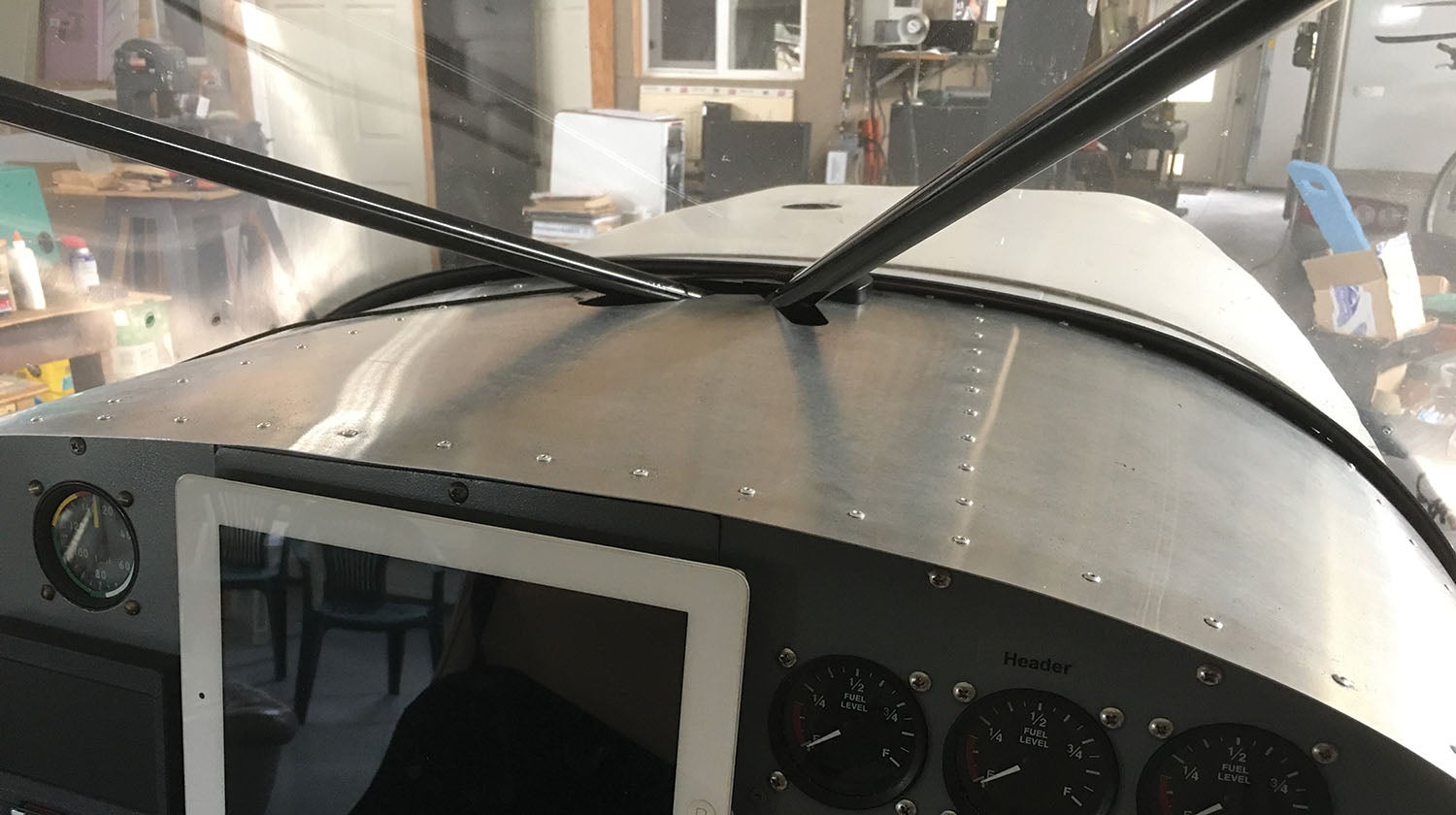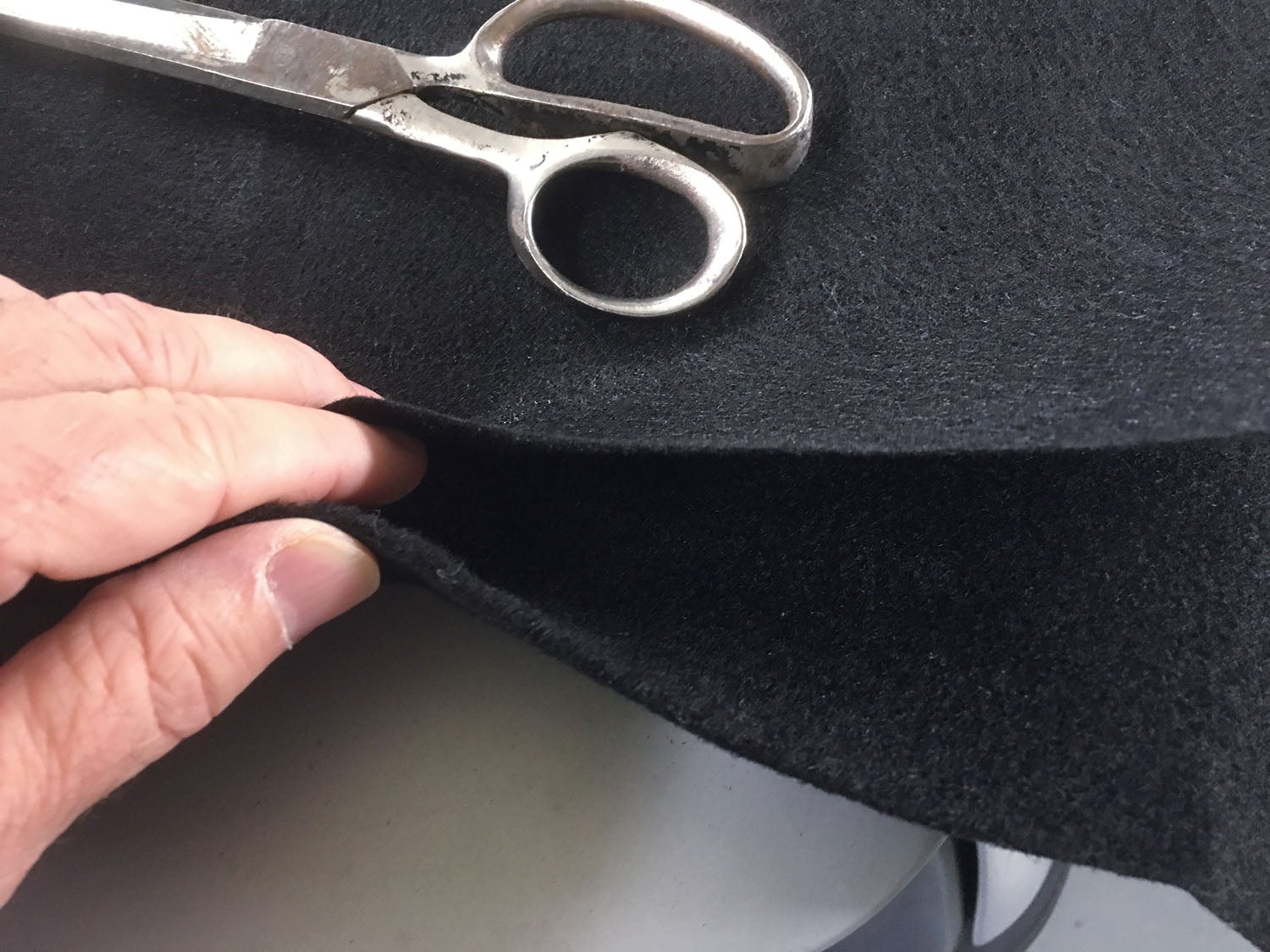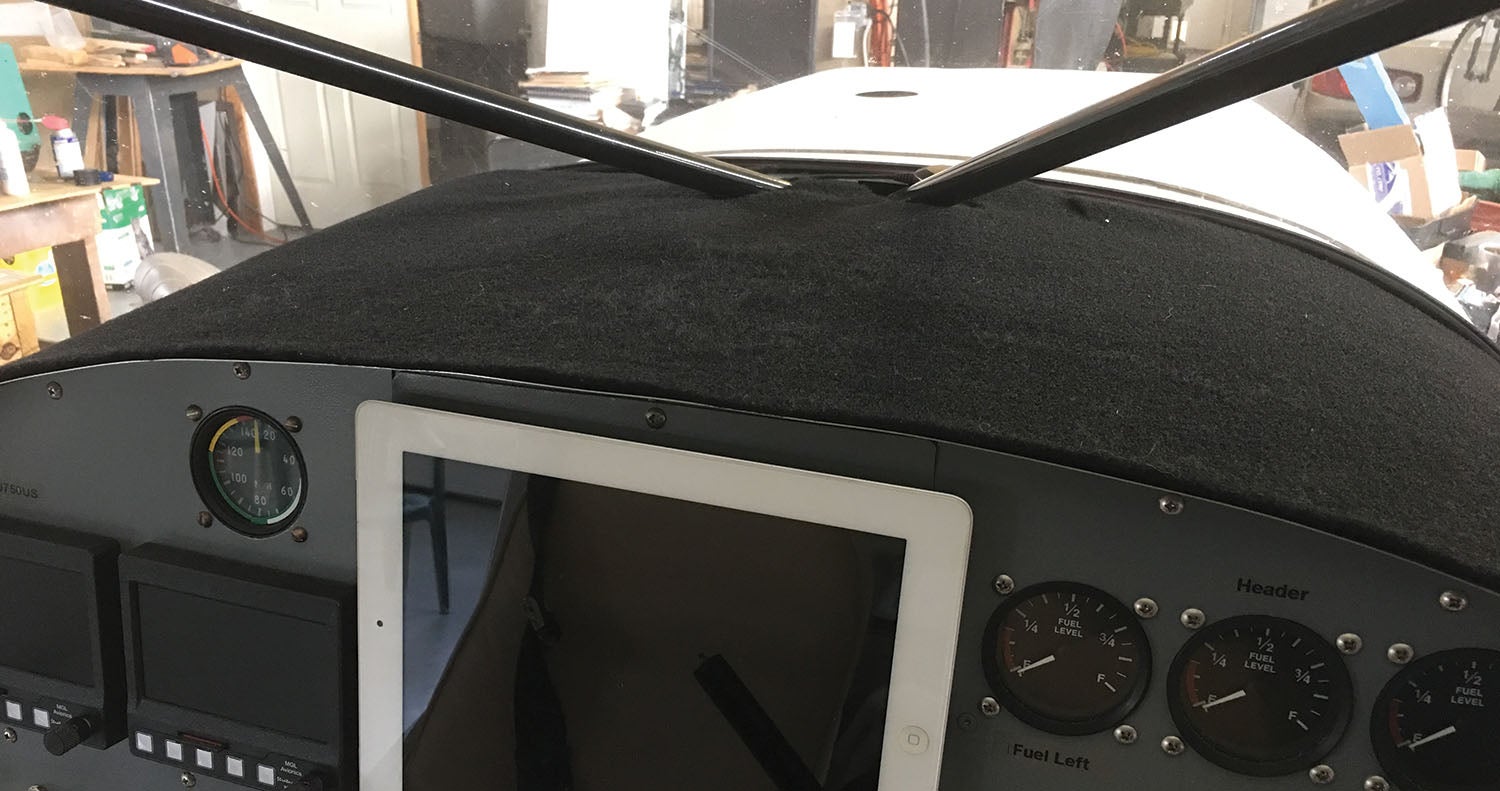
Many popular aircraft kits utilize a sheet of aluminum to form the glareshield—that “shelf” located above the instrument panel and below the windshield. While this component provides a cover to the avionic components, it also can function as a mirror to send blinding sunlight into your eyes and block your vision. A more accurate description of the problem is that this glareshield reflects sunlight back up to the inside of your windshield, obscuring the view outside. Of course this does not happen all of the time—you have to be traveling in just the right direction relative to the sun. When it does occur, it is annoying and even dangerous (e.g., when on final to land).
The problem with the glareshield in the kit you are building may be that it does not provide a “shield” as aluminum is highly reflective by nature! So it is your job to find a way to reduce or eliminate this reflective surface. The kit manufacturer knows that this is also a cosmetic choice only the builder can pick. One popular option is to paint the surface. Keep in mind that many paints are glossy and can still reflect considerable light. And, if you choose this solution, the glareshield often cannot be easily painted once installed in the aircraft. There is little room for painting in the narrow corners where the windshield is attached. Builders are often only convinced about the glare problem when they experience it firsthand in flight, so this step is often neglected during construction.

Another favorite option to reduce glare (and can be addressed even after the aircraft is finished) is to use auto trunk carpet, also known as speaker box liner. Search Amazon and other internet stores using these terms. Similar to felt fabric, this material is black, very lightweight, inexpensive, extremely thin and easy to cut. It is not the same as the carpeting in your car, which is much thicker and heavier. The flat, black, slightly fuzzy surface is ideal for eliminating reflections and provides a professional appearance to your aircraft’s interior. It can be found at hobby and craft stores. Be careful when shopping for this material online as it may be difficult to determine its weight and thickness. There is no ideal thickness—you need to make a personal evaluation for best choice. If the online product reviews exclaim dissatisfaction because it is too thin and allows light to pass through, you may have found the correct material!

Installation is simple: Using scissors, cut the fabric to the desired size and shape and then glue to the glareshield surface. For aluminum, simply use a light spray coat of fabric adhesive for a good bond. It can always be pulled off later if desired. I used a large sheet of paper to design a template while experimenting for the best appearance. You can choose to cover all or just part of the glareshield surface.
You may find other areas of your aircraft interior that can make use of this liner. While not durable enough for use under your feet, its light weight and simple installation makes it great for dressing up other metal interior surfaces. As for your new glareshield that genuinely eliminates glare, you may also find that Velcro covered objects will stick nicely in place to this material and provide for an easy reach while flying.













